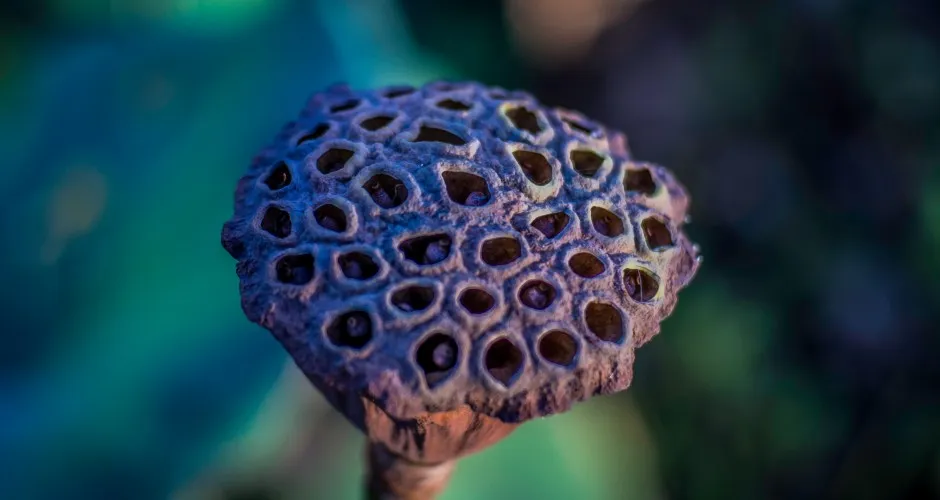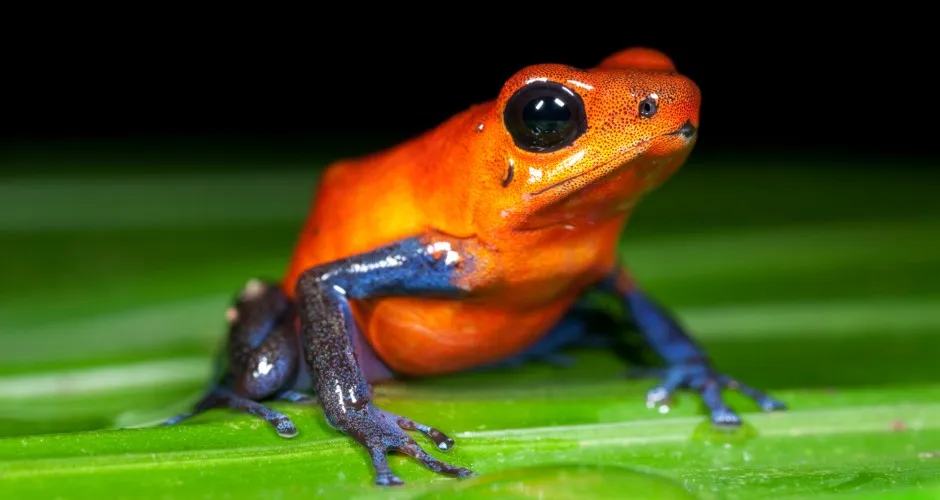Are you sitting uncomfortably? Does the picture below make you feel uneasy, unexpectedly nauseous or even terrified? Then we’ve got news for you: you probably suffer from a degree of trypophobia, an aversion to clusters of small holes.
Don’t worry, you’re not alone. While it’s estimated nearly 20 per cent of people are severely repulsed by pictures like the lotus pod above, some scientists think the majority of people react in some form to these images.
“I think we all have trypophobia, just to different degrees,” says Dr Geoff Cole, one of the first scientists to study the disorder. “Just like many other psychological phenomena – autism, for instance – everyone is on the scale.”

However, despite one in five people having severe trypophobia (double the estimated amount of people prone to claustrophobia), the disorder is remarkably under-researched.
“This is essentially because nobody was aware of it until the internet developed and these images were shared in forums,” says Cole, who published the first scientific paper on the topic (with co-author Prof Arnold Wilkins) in 2013. "Because we've just noticed this phenomenon, there is still quite a lot we don’t know.”
But what has been discovered so far? And can scientists explain why people hate these hole-riddled images? We dig into the issue below – alongside more pictures that some may find very uncomfortable. Consider yourself warned.
Is trypophobia a real phobia?
It’s easy to be sceptical about trypophobia, a phobia that came to prominence through chatrooms in the early noughties. Even its name (Greek for ‘boring holes’ plus ‘fear’) emerged from an internet forum away from the gaze of medical professionals.
However, despite these questionable beginnings, Cole has shown that images with high contrasts between dark and light, repeated many times in a field of view (about three times per centimetre at arm’s length), can have a real impact on a person's body.

His research has shown trypophobic people’s heart rates can significantly increase when looking at images of hole clusters – be it honeycomb, aerated chocolate or even crumpets. Sufferers can also experience nausea, sweating, itchiness and debilitating panic attacks.
Cole also defines trypophobia as a mental disorder. “Think of it as the visual equivalent of somebody scratching their nails down a chalkboard – the brain doesn’t like these neural spikes these images create,” he says.
What causes trypophobia?
At the moment, there’s no one agreed explanation to what causes trypophobia. But scientists have developed several theories – four, to be precise:
- The aposematism theory
- The pathological theory
- The visual stress theory
- The internet meme theory
The aposematism theory

A theory originally put forward by Cole, it proposes humans have evolved to be fearful of such patterns as they are usuallyseen on poisonous animals or food.
“If you look at animals which are dangerous in this respect, like the poison dart frog, they tend to be covered in high contrast colours. These visual signatures are barely found anywhere else in the natural world,” explains Cole.
“Basically, the idea here is that when you look at a trypophobic image your brain is saying ‘be careful here, this could harm you.'”
Read more about phobias:
- Why do I have an irrational fear of crumpets?
- How to overcome phobias and conquer your fears in four steps
- Why do we shake when we’re nervous or frightened?
The pathological theory
Like the above, this explanation suggests trypophobia is an evolutionary adaptation: as many skin diseases have trypophobic traits, humans have evolved to pay these patterns attention.
“It follows the thinking that humans have developed a sensitivity towards skin pathology,” says Cole. “In this way, it’s possible that a trypophobic reaction keeps us alert to any illness, either on ourselves or others.”
The visual stress theory

The current favourite of researchers like Cole, this theory proposes, that we can’t quite be sure what causes it – that trypophobia serves no functional purpose and has no solid evolutionary adaptation.
“The neuroscience behind this theory is quite interesting. Recently we used a technique called infrared spectroscopy to examine people with trypophobia – it’s a method that allows you to see where the blood and activity are in somebody’s brain,” says Cole.
“And on seeing trypophobic images, the blood was found towards the back of participants' brains – it was in the visual areas of the brain, rather than the frontal decision-making areas.”
As Cole says, this may indicate a trypophobic response may not be prompting us to make a decision about how dangerous an object is. “It indicates there might not be an evolutionary reason why we don’t like these images – it may simply just be that the brain doesn’t like it. And we might never know more than this.”
The internet meme theory
What if trypophobia didn’t actually exist at all before it became big in internet forums? What if humans have been trained to think these images are something to fear due to online hype? That’s the explanation some have put forward.
“It’s the whole nature versus nurture argument: are people really born with a revulsion to things like rats? Or are we socially conditioned to be afraid of them?” says Cole.
“As some people argue, isn’t it strange that more people develop phobias of spiders, but not cars, which are more likely to kill you? There’s a massive debate about phobia acquisition here that may never be solved.”
As many review papers have noted, it’s difficult to examine genetic factors from social – no phobia studies have yet been carried out on identical twins raised in different households.
True, in one study six-month-old infants were shown to have slightly higher levels of ‘fight or flight’ chemical norepinephrine when presented with images of snakes and spiders, compared to flowers and goldfish. But this alone does not prove common human phobias and fears are in-built.
“And with trypophobia it’s getting harder to separate nature from nurture, particularly with results. As these images become more popular online, how likely is it you can find an adult that has never seen a trypophobic image before and test them?”
In short, when it comes to trypophobia, it's getting more and more unlikely we'll know the hole truth.
About our expert, Dr Geoff Cole
A researcher at the University of Essex, Cole studies visual attention, cognitive neuropsychology and evolution.
Read more about the science of fear: